14.11.2019
China has showed off its Mars spacecraft during a landing test as the country pushes for inclusion in more global space projects
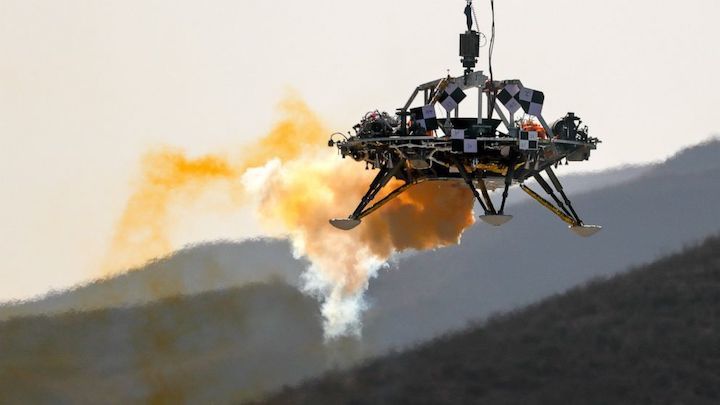
A lander is lifted during a test of hovering, obstacle avoidance and deceleration capabilities at a facility in Huailai in China's Hebei province, Thursday, Nov. 14, 2019. China has invited international observers to the test of its Mars lander as it pushes for inclusion in more global space projects. Thursday's test was conducted at a site outside Beijing simulating conditions on the Red Planet, where the pull of gravity is about one-third that of Earth. (AP Photo/Andy Wong)
China showed off its Mars spacecraft during a landing test Thursday as the country pushes for inclusion in more global space projects.
The demonstration of hovering, obstacle avoidance and deceleration capabilities was conducted at a site outside Beijing simulating conditions on the red planet, where the pull of gravity is about one-third that of Earth.
China plans to launch a lander and rover to Mars next year to explore parts of the planet, one of four scheduled missions. The U.S. and Europe are also sending rovers to Mars next year, and the United Arab Emirates plans to launch an orbiter.
China's burgeoning space program achieved a lunar milestone earlier this year by landing a spacecraft on the mysterious far side of the moon.
It has developed rapidly, especially since it conducted its first crewed mission in 2003, and has sought cooperation with space agencies from Europe and elsewhere.
The U.S., however, has banned most space cooperation with China out of national security concerns, keeping China from participating in the International Space Station.
Despite that, China’s ambitions continue to grow as it seeks to rival the U.S., Russia and Europe in space and cement its position as a regional and global power. It is gradually constructing its own larger, more permanent space station in which it has invited foreign participation.
The lander on Thursday successfully avoided ground obstacles during a simulated low-gravity descent, according to the China Aerospace Science and Technology Corporation, the Chinese space program’s main contractor.
The refrigerator-sized craft was lowered gently on 36 cables through the air for about a minute and used onboard jets spraying rust-colored fumes to alter its downward course.
“After the probe is launched, it will take about seven months to reach Mars, and the final procedure of landing will only last about seven minutes, which is the most difficult and the most risky part of the whole mission,” said the Mars mission’s chief designer, Zhang Rongqiao, standing before the 140-meter (460-foot) -tall testing facility.
Many Mars-bound spacecraft launched by the U.S., Russia and other countries have been lost or destroyed over the years. Only the U.S. has pulled it off and has made eight successful landings.
The remote test site lies an hour north of the Great Wall from Beijing.
Guests at Thursday’s event came from 19 countries and included the ambassadors of Brazil, France and Italy.
“This event is the first public appearance of China's Mars exploration mission, also an important measure for China to pragmatically carry out space international exchanges and cooperation,” the China National Space Administration said in a statement.
Quelle: abcNews
+++
China unveils experiment for landing on Mars
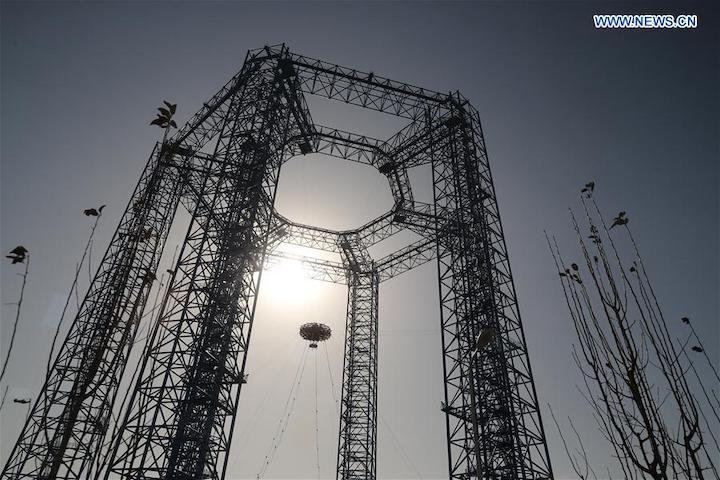
Photo taken on Nov. 14, 2019 shows the trial ground of an experiment for landing on Mars in Huailai County, north China's Hebei Province. China on Thursday unveiled an experiment simulating the process of a probe hovering, avoiding obstacles and descending to land on Mars. China plans to launch the Mars probe in 2020, aiming to complete orbiting, landing and roving in one mission, an unprecedented achievement, according to the China National Space Administration. How to safely land on Mars is one of the biggest challenges facing the mission. The experiment simulated the gravity of Mars, about one-third of the gravity on Earth, to test the design of the lander. (Xinhua/Jin Liwang)
China on Thursday unveiled an experiment simulating the process of a probe hovering, avoiding obstacles and descending to land on Mars.
The experiment was held on a trial ground, the largest in Asia for test landing on extraterrestrial bodies, in Huailai County, north China's Hebei Province.
China plans to launch the Mars probe in 2020, aiming to complete orbiting, landing and roving in one mission, an unprecedented achievement, according to the China National Space Administration (CNSA).
How to safely land on Mars is one of the biggest challenges facing the mission.
The experiment simulated the gravity of Mars, about one-third of the gravity on Earth, to test the design of the lander.
Ambassadors and diplomats from 19 countries including France, Italy and Brazil, as well as representatives from the European Union, the African Union and the Asia-Pacific Space Cooperation Organization were invited to visit the experiment.
Zhang Kejian, administrator of the CNSA, said since the official kick-off in 2016, China's Mars exploration program has progressed well. The hovering and obstacle avoidance test for the Mars lander is a crucial step of the project.
Zhang said China has been actively promoting international cooperation in space exploration. To date, China has signed over 140 space cooperation protocols with 45 countries and international organizations.
China has collaborated with France, Italy and Brazil in developing satellites for ocean, earth resources and astronomical observation and the study of seismic precursors, Zhang said.
China's Chang'e-4 mission embodies China's hope to combine wisdom in space exploration with four payloads developed by the Netherlands, Germany, Sweden and Saudi Arabia.
In April, the CNSA announced opportunities for cooperation with Chang'e-6 and asteroid exploration missions.
Earlier this month, China announced it would make the 16-meter optical data obtained by the Gaofen-1 and Gaofen-6 satellites available to global users.
"All these measures have enabled more countries, especially developing countries to enjoy the benefits brought by space technology and to advance social-economic development," Zhang said.
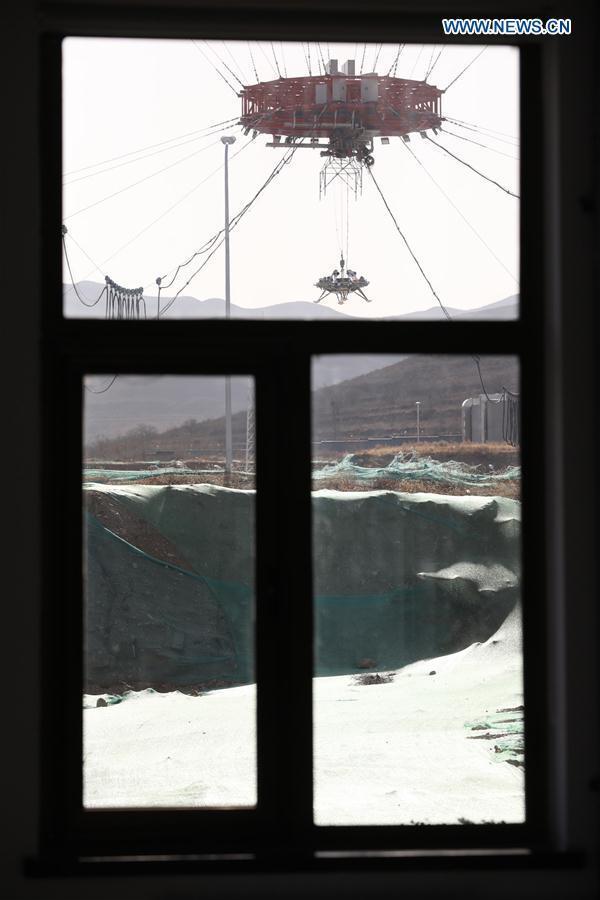
Photo taken on Nov. 14, 2019 shows the trial ground of an experiment for landing on Mars in Huailai County, north China's Hebei Province. China on Thursday unveiled an experiment simulating the process of a probe hovering, avoiding obstacles and descending to land on Mars. China plans to launch the Mars probe in 2020, aiming to complete orbiting, landing and roving in one mission, an unprecedented achievement, according to the China National Space Administration. How to safely land on Mars is one of the biggest challenges facing the mission. The experiment simulated the gravity of Mars, about one-third of the gravity on Earth, to test the design of the lander. (Xinhua/Jin Liwang)
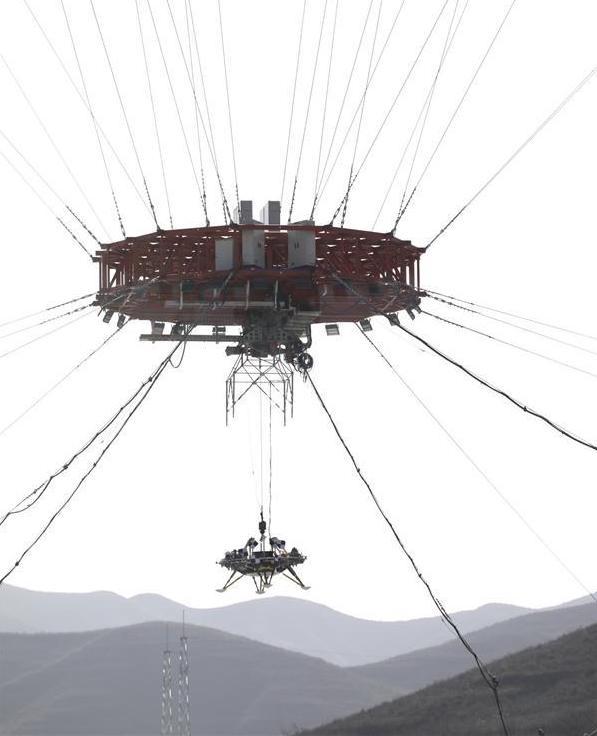
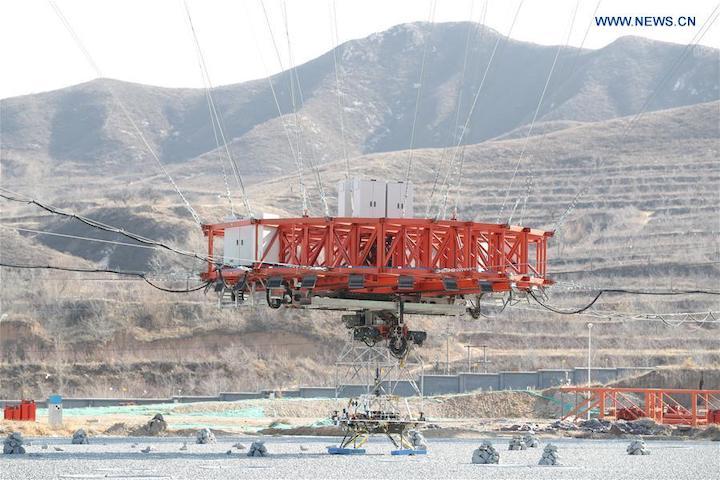
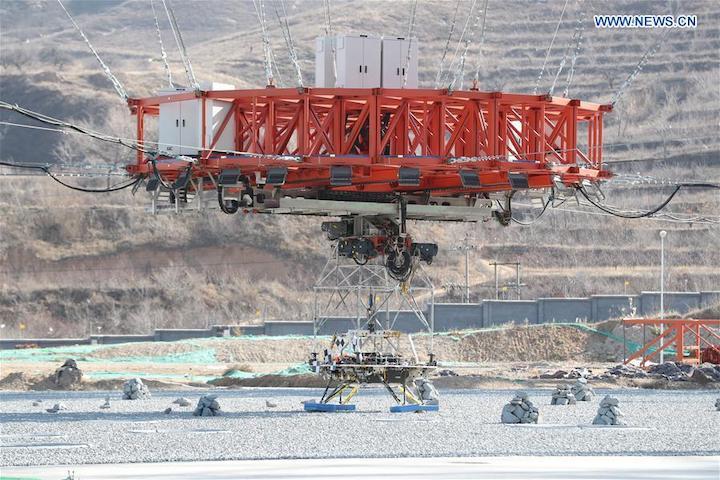
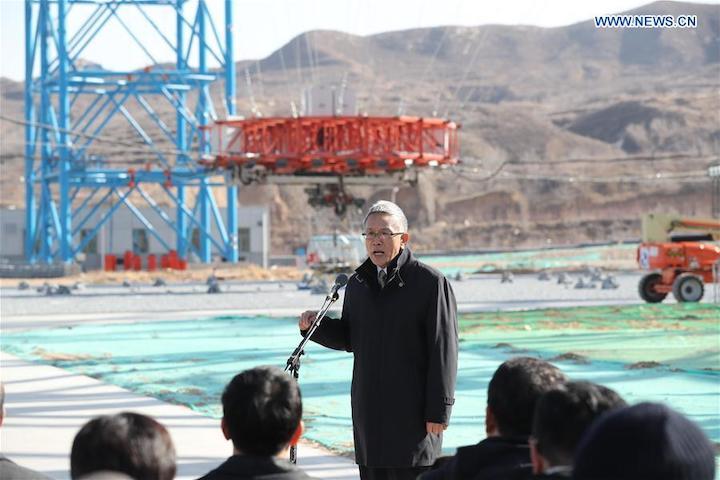
Zhang Rongqiao, chief architect of the Mars mission, speaks at the trial ground of an experiment for landing on Mars in Huailai County, north China's Hebei Province, Nov. 14, 2019. China on Thursday unveiled an experiment simulating the process of a probe hovering, avoiding obstacles and descending to land on Mars. China plans to launch the Mars probe in 2020, aiming to complete orbiting, landing and roving in one mission, an unprecedented achievement, according to the China National Space Administration. How to safely land on Mars is one of the biggest challenges facing the mission. The experiment simulated the gravity of Mars, about one-third of the gravity on Earth, to test the design of the lander. (Xinhua/Jin Liwang)
Quelle: Xinhua

